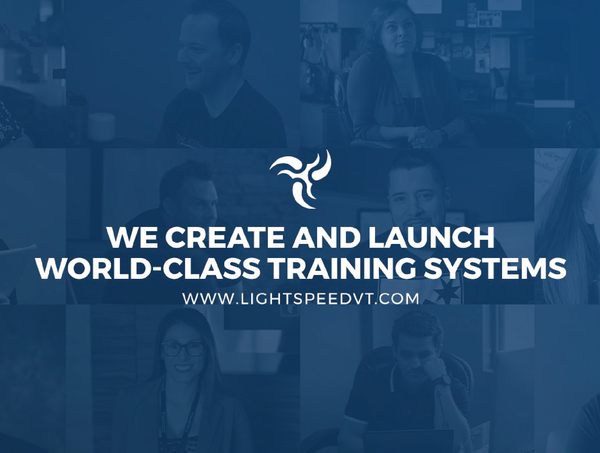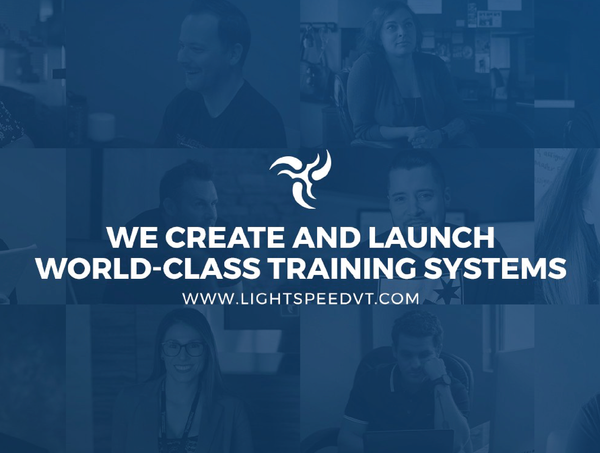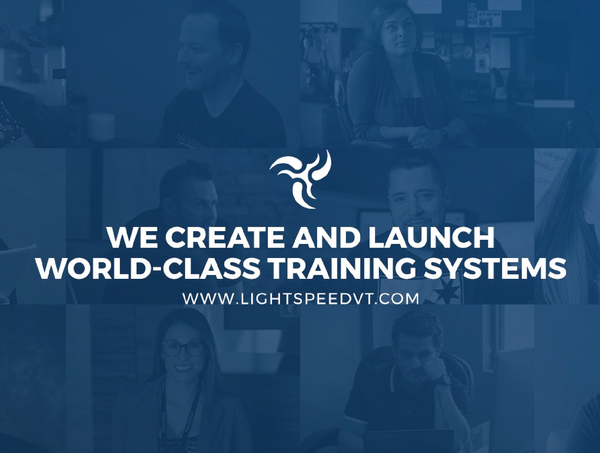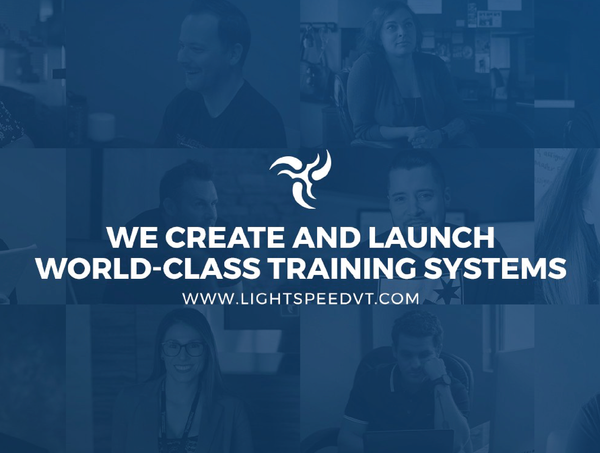A Comprehensive Overview of Learning Management Systems: Trends and Innovations

Learning Management Systems (LMS) have become integral to the delivery of educational content and corporate training. The rapid evolution of technology and the changing landscape of learning and development have given rise to new trends, features, and considerations in the realm of LMS. This article provides a comprehensive overview of these elements, discussing the current state and future directions of LMS platforms, their impact on learners and organizations, and the factors to consider when selecting the right system.
Key Takeaways
- The future of LMS is shaped by the demand for personalized, mobile-friendly, and immersive learning experiences, with trends like adaptive learning, microlearning, and gamification leading the way.
- Modern LMS platforms are expected to integrate with workforce development and utilize AI and ML to enhance learning experiences through adaptive learning paths and advanced analytics.
- Key features of contemporary LMS include efficient course management, comprehensive tracking and reporting analytics, versatile user management, and effective assessment tools.
- Choosing the right LMS involves understanding organizational needs, evaluating leading vendors, considering migration strategies, and utilizing resources like white papers and webinars for informed decision-making.
- The LMS market continues to grow, driven by the need for remote learning solutions and the integration of digital content, with key players like Anthology, Moodle, and Cornerstone OnDemand shaping the industry.
Emerging Trends in Learning Management Systems
Personalized and Adaptive Learning
Adaptive learning is revolutionizing the way educational content is delivered, by aligning it with the individual needs of learners. It offers a customizable and intuitive user experience, ensuring that each learner's journey is tailored to their unique preferences, skills, and performance. This approach not only enhances engagement but also significantly improves relevance and effectiveness of the learning material.
Key features of adaptive learning systems include:
- Personalized content delivery that adjusts in real-time.
- Dynamic learning paths that evolve based on learner performance.
- AI-powered analytics to predict and suggest relevant content.
The increasing demand for adaptive learning solutions highlights a shift towards more personalized and efficient learning experiences, both in educational institutions and corporate training environments.
The market for adaptive learning is driven by the need for more personalized learning experiences. As such, platforms are continuously evolving to provide real-time feedback and adjustments to learning paths, which promotes better knowledge retention and skill development.
Mobile Learning and Microlearning
The landscape of Learning Management Systems (LMS) is rapidly evolving to accommodate the surge in mobile learning and microlearning. These approaches cater to the modern learner's need for flexibility and on-the-go access to educational content. Mobile learning solutions are increasingly favored for their convenience, allowing learners to engage with material anytime and anywhere.
Microlearning breaks down complex topics into bite-sized, manageable pieces, making it easier for learners to absorb and retain information. This method aligns with the busy schedules and shorter attention spans of today's workforce. The integration of gamification tools further enhances the learning experience, with elements like points, badges, and leaderboards that drive motivation and retention.
The LMS market is highly competitive, with key players focusing on user experience and platform capabilities. The continuous innovation in mobile and microlearning features is a testament to the industry's commitment to meeting the evolving demands of learners.
The table below showcases the growth of instructor-led training, which often incorporates mobile learning elements, demonstrating the market's expansion and the increasing value placed on flexible learning solutions.
| Region | 2018-2022 (USD Million) | 2023-2028 (USD Million) |
|---|---|---|
| North America | Data Not Available | Data Not Available |
| Europe | Data Not Available | Data Not Available |
| Asia-Pacific | Data Not Available | Data Not Available |
| Rest of the World | Data Not Available | Data Not Available |
Gamification and Interactive Content
Learning Management Systems (LMS) are increasingly incorporating gamification and interactive content to enhance the learning experience. These features are designed to increase learner engagement by making education more compelling and enjoyable. Gamification tools, such as points, badges, and leaderboards, tap into the competitive spirit to motivate learners and track their progress.
Interactive content ranges from videos and podcasts to simulations and user-generated material, all aimed at providing a more dynamic learning environment. This approach not only supports diverse learning styles but also encourages collaboration and a deeper understanding of the subject matter.
The integration of gamification and interactive content into LMS platforms represents a significant shift towards more engaging and personalized learning experiences.
Here are some examples of interactive and gamified elements that can be found in modern LMS platforms:
- Interactive landing pages with e-commerce integration
- Full automation and SCORM support
- Zapier integration and API/webhooks/SSO
- Leaderboards and training assignments
- Community features and live streaming
- Localization tools and a notification center
These innovations are part of a broader trend to make learning more accessible and enjoyable, with the ultimate goal of improving course effectiveness and learner retention.
Integration with Workforce Development
The seamless integration of Learning Management Systems (LMS) with workforce development tools is a pivotal trend in the evolution of corporate training. By connecting LMS platforms with Human Capital Management (HCM) systems, organizations can automate the flow of employee data, ensuring that training initiatives are aligned with individual career paths and organizational goals.
The integration process typically involves linking the LMS with various HR systems, such as ADP, BambooHR, and Salesforce Connector, to facilitate real-time updates and data synchronization.
This integration enables companies to provide integrated employment training across different regions and departments, enhancing the overall efficiency of workforce planning. For instance, in April 2023, eLeaP introduced new skills and competency management features to its LMS, aiming to revolutionize employee training and engagement.
Key Connectors for LMS and Workforce Development:
- ADP Connector
- BambooHR
- ClearCompany
- HCM Connectors
- Namely
- Salesforce Connector
- Webex
- Zoom
The Role of Artificial Intelligence and Machine Learning
The integration of Artificial Intelligence (AI) and Machine Learning (ML) into Learning Management Systems (LMS) is revolutionizing the way individuals engage with educational content. AI and ML are transforming LMS platforms into dynamic learning environments that adapt to the unique needs of each user. By analyzing user behavior, preferences, and performance data, these intelligent systems can personalize the learning experience, making it more relevant and effective.
- AI algorithms recommend content and adjust learning paths for individualized experiences.
- Virtual assistants and chatbots provide real-time assistance, enhancing user engagement.
- Automation of routine tasks allows educators to focus on more complex educational challenges.
The use of AI in LMS is not just about efficiency; it's about creating a more intuitive and responsive learning journey. This technology acts as a skilled co-pilot, automating mundane tasks and assisting in creative processes, thereby optimizing business operations and improving learning outcomes.
As AI continues to evolve, its role in LMS platforms is expected to grow, offering even more sophisticated tools for personalization and engagement. The potential for AI to enhance learning is vast, with the promise of delivering a comprehensive and engaging learning experience to users.
Key Features and Functions of Modern LMS Platforms
Course Management and Content Delivery
In the realm of Learning Management Systems (LMS), course management and content delivery are pivotal for the effective dissemination of knowledge. These systems provide a structured environment where educators and trainers can create, organize, and distribute educational content with ease.
- Course builder: Facilitates the creation and publication of courses with tailored content.
- Content library: Offers a repository of courses across various industries, enhancing the resource pool available to learners.
Modern LMS platforms are designed to be user-friendly, catering to organizations with diverse technical capabilities. The inclusion of content creation and management tools allows for the uploading of various content types, including SCORM-compliant courses, videos, documents, and assessments.
The seamless integration with third-party tools, such as HRIS systems, content libraries, and video conferencing solutions, underscores the versatility of LMS platforms in adapting to the evolving needs of organizations.
As the market for course management continues to grow, it is essential to recognize the impact of these systems on the learning experience. The table below illustrates the projected market growth for course management by region from 2023 to 2028.
| Region | 2023 (USD Million) | 2028 (USD Million) |
|---|---|---|
| North America | TBD | TBD |
| Europe | TBD | TBD |
| Asia-Pacific | TBD | TBD |
| Rest of the World | TBD | TBD |
Note: The actual figures are to be determined (TBD) and will be updated as the data becomes available.
Tracking and Reporting Analytics
In the realm of Learning Management Systems (LMS), tracking and reporting analytics are pivotal for measuring the effectiveness of training programs. These analytics enable organizations to establish clear connections between training efforts and critical performance indicators, which is essential for demonstrating a positive return on investment (ROI).
Advanced analytics within LMS platforms provide valuable insights into learner engagement and progress. They also facilitate the application of skills in real-world scenarios, enhancing the overall learning experience. Here's a brief overview of the types of analytics commonly tracked:
- Learner Progress: Tracks individual or group progress through courses.
- Engagement Metrics: Measures time spent, interaction levels, and participation in discussions.
- Assessment Results: Analyzes scores and outcomes to gauge understanding.
- Skill Application: Monitors how effectively skills are applied within the workplace.
The integration of LMS data with broader organizational performance metrics is a strategic move that can contribute significantly to the overall success of training initiatives. It allows for a more comprehensive view of how learning interventions impact business outcomes.
However, a common restraint is the lack of performance tracking and the difficulty in measuring ROI. Organizations must seek LMS solutions that offer robust analytics and reporting features to overcome this challenge. For instance, LightSpeed VT offers a state-of-the-art training system with world-class support, ensuring that organizations can track performance without commitment and at a low license fee.
User Management and Access Control
Effective user management and access control are critical for maintaining the integrity and security of a Learning Management System (LMS). Administrators must be able to assign roles, manage permissions, and ensure secure authentication to create a safe and personalized learning environment.
- User Authentication: Ensures that only authorized users can access the system.
- User Roles and Permissions: Defines what actions users can perform within the LMS.
- Provisioning: Streamlines the process of creating and managing user accounts.
- Analytics: Provides insights into user activity and learning progress.
The ability to customize user experiences and maintain control over who can see and do what within an LMS is not just a feature; it's a necessity for any organization aiming to deliver effective online training.
As the market for LMS continues to grow, the demand for sophisticated user management features is on the rise. The following table illustrates the projected market growth for user management in LMS by region from 2023 to 2028.
| Region | 2023 (USD Million) | 2028 (USD Million) |
|---|---|---|
| North America | TBD | TBD |
| Europe | TBD | TBD |
| Asia-Pacific | TBD | TBD |
| Rest of the World | TBD | TBD |
Note: Actual figures are to be determined (TBD). The table serves as a placeholder for future data.
Assessment and Evaluation Tools
Modern Learning Management Systems (LMS) offer a suite of assessment and evaluation tools designed to measure learner progress and the effectiveness of training programs. These tools are essential for understanding the practical application of knowledge and skills in real-world scenarios.
Assessment tools within an LMS can range from simple quizzes to comprehensive exams, often including features such as automated grading and feedback mechanisms. Evaluation tools may extend to advanced analytics, providing insights into course effectiveness and learner engagement.
- Key Assessment and Evaluation Features:
- Automated Grading
- Instant Feedback
- Real-time Analytics
- Customizable Testing Interfaces
- Skills Gap Analysis
The ability to track and report on learner performance is crucial for organizations to ensure the continuous improvement of their training programs. Without these tools, it's challenging to gauge the true impact of educational initiatives on both individual and organizational growth.
Choosing the Right Learning Management System
Understanding Organizational Needs
Choosing the right Learning Management System (LMS) begins with a deep understanding of your organization's unique needs and goals. Identifying the specific requirements and preferences of your organization is crucial to selecting an LMS that aligns with your strategic objectives.
- Learning Objectives: Define your organization's learning goals and the type of learning (structured LMS or personalized LXP) that best supports them.
- User Preferences: Consider the learning habits of your employees to ensure the LMS caters to their preferred learning style.
- Content Needs: Determine the types of content that are essential for your learning initiatives, such as standardized courses or interactive modules.
- Functionality: The LMS should meet your technical requirements and offer the features necessary to achieve your learning objectives.
- Customization: Evaluate the LMS's customization options to ensure it can be tailored to fit your organization's branding and specific needs.
- Usability: The ease of use and accessibility for both administrators and learners is paramount for effective adoption and engagement.
By carefully considering these factors, organizations can avoid the allure of superficial features and make a pragmatic decision that supports their learning and development strategy.
Evaluating LMS Vendors and Market Leaders
When venturing into the selection of a Learning Management System, it's crucial to evaluate the vendors and market leaders thoroughly. Identifying the right LMS provider is a pivotal step in ensuring the success of your eLearning initiatives. A comprehensive approach involves looking at the vendor's expertise, technological capabilities, and the quality of content they offer.
- Ask for case studies: Reputable vendors will share success stories and use cases highlighting the impact on other businesses.
- Consider industry awards: Recognitions received by the LMS provider can indicate quality.
It's essential to not only assess the product features but also the support and service the vendor provides post-implementation.
The market is replete with established players, each offering a unique set of features and services. Here's a snapshot of some significant vendors:
| Vendor | Headquarters | Notable Products |
|---|---|---|
| Anthology | US | - |
| Moodle | Australia | - |
| Cornerstone OnDemand | US | - |
| D2L Corporation | Canada | - |
| Instructure Inc. | US | - |
Remember, the goal is to find a vendor that aligns with your organizational needs and can deliver a scalable and effective LMS solution.
Key Considerations for LMS Migration
Migrating to a new Learning Management System (LMS) is a significant decision that can greatly impact the effectiveness of an organization's training and development programs. Careful planning and consideration are essential to ensure a smooth transition and to avoid potential pitfalls.
When considering LMS migration, it's important to evaluate the ease of onboarding with the new system. A platform that offers comprehensive guides and tutorials can empower users to quickly adapt and feel comfortable with the new environment. Additionally, understanding the technical aspects of the migration, such as data mapping and system workflows, is crucial. Ask your LMS provider to outline these processes early on to facilitate a smooth implementation.
Cost is another critical factor to consider during LMS migration. It's not just about the initial investment; ongoing expenses such as licensing fees, support costs, and potential customization needs should also be taken into account. A detailed breakdown of costs will help in making an informed decision.
Lastly, ensure that the new LMS aligns with your organization's training trends and objectives, such as supporting upskilling and reskilling for diverse learning styles. The right LMS should enhance your training program, not hinder it.
Resources for Informed Decision Making
When selecting a Learning Management System (LMS), it's crucial to have access to the right resources that can guide the decision-making process. Comprehensive market reports and case studies offer valuable insights into the effectiveness and applicability of different LMS platforms.
To facilitate a structured evaluation, consider the following key criteria:
- Learning Objectives: Align LMS features with your organization's learning goals.
- User Preferences: Match the LMS with your employees' learning habits and preferences.
- Content Needs: Ensure the LMS can support the type and volume of content required.
Making an informed decision involves weighing various factors, from user preferences to content needs, ensuring the chosen LMS aligns with organizational objectives.
Additionally, engaging with stakeholders and understanding their influence on the buying process can provide a clearer picture of the organizational needs. Below is a succinct representation of stakeholder influence:
| Stakeholder Group | Influence on Buying Process |
|---|---|
| Executives | High |
| IT Department | Medium |
| End Users | Medium to High |
Ultimately, the right LMS should not only meet current requirements but also be scalable to adapt to future learning trends and organizational growth.
The Impact of LMS on Education and Corporate Training
Facilitating Remote Learning and Training
The landscape of remote learning and training is evolving rapidly, driven by technological advancements and shifting work dynamics. Organizations are increasingly leveraging Learning Management Systems (LMS) to educate and upskill their workforce remotely. The integration of Instructor-led Training (ILT) with LMS platforms has emerged as a key trend, enabling virtual classrooms that transcend geographical barriers.
The flexibility offered by LMS platforms facilitates a diverse and rich learning experience, where content can be personalized and adapted to meet the needs of individual learners.
Flexible online training environments are gaining popularity across various industries, including healthcare, BFSI, IT, and telecommunications. Retailers, for instance, are utilizing e-learning to enhance sales training and product knowledge among employees. The table below highlights the benefits of remote learning and training facilitated by LMS:
| Benefit | Description |
|---|---|
| Geographical Flexibility | Training can be accessed from any location. |
| Cost Efficiency | Reduces the need for physical training resources. |
| Personalized Learning Experience | Allows for customization of content to suit individual needs. |
| Continuous Access | Learning materials are available 24/7 for convenience. |
As organizations prioritize employee training and development, the role of LMS in supporting remote learning initiatives becomes increasingly critical. It not only provides a platform for consistent training but also ensures that learning is an ongoing process, integral to the growth and development of both individuals and the organization as a whole.
Enhancing Learner Engagement and Experience
Learning Management Systems (LMS) have revolutionized the way educational content is delivered and consumed. Enhanced engagement is achieved by seamlessly combining structured content with diverse resources, which elevates user participation significantly. Personalized learning paths are now a reality, with LMS harnessing their organizational and tracking capabilities alongside the personalization prowess of Learning Experience Platforms (LXP) to tailor learning experiences to individual preferences.
By blending formal courses with user-generated content, interactive modules, and social learning, LMS platforms foster a more holistic learning environment. This approach not only supports the traditional learning model but also introduces a dynamic and interactive dimension that significantly boosts learner motivation.
The integration of gamification tools and microlearning techniques gamifies the learning experience through elements like points, badges, and leaderboards. This not only makes learning more enjoyable but also enhances retention. Additionally, the ability to create and deliver shorter, focused learning modules caters to the modern learner's need for quick and accessible information.
Administrators benefit from the ability to monitor learner progress, examine learning trends, and create reports on student performance and engagement. These analytics and reporting capabilities offered by LMS are crucial for understanding the effectiveness of the training program and making informed decisions to improve learning outcomes.
Supporting Continuous Learning and Upskilling
Learning Management Systems (LMS) have become crucial in modern education and training ecosystems, offering scalable and flexible tools to support lifelong learning and professional development initiatives. They play a pivotal role in fostering a culture of continuous learning and upskilling within organizations.
By prioritizing employee training and development, companies nurture a skilled workforce and foster a culture of growth and innovation.
The benefits of continuous learning facilitated by LMS include:
- Skill Enhancement: Keeping employees updated with industry trends, tools, and best practices.
- Retention and Engagement: Signaling that an organization values its employees, fostering loyalty and commitment.
- Adaptability: Ensuring employees stay agile and adaptable to rapid changes in technology and market demands.
Moreover, LMS platforms are evolving to enhance their capabilities, offering adaptive learning paths, personalized content recommendations, and data-driven insights. This is particularly relevant as organizations recognize the importance of cultivating a learning culture to stay competitive and address evolving skill requirements.
Compliance Training and Talent Development
Learning Management Systems (LMS) have become pivotal in ensuring that organizations meet regulatory compliance and certification requirements. The tracking capabilities of an LMS are instrumental in monitoring employee progress and completion of mandatory training.
By integrating product knowledge modules and structured training frameworks, LMS platforms enhance the performance of sales teams and support continual professional development.
Corporate training and development initiatives often include:
- Employee Onboarding
- Skill Development and Upskilling
- Social Learning
- Sales Training
- Mobile Learning
- Partner Learning
- Customer Training
The table below illustrates the market growth for corporate training and development in the LMS sector:
| Region | 2018-2022 (USD Million) | 2023-2028 (USD Million) |
|---|---|---|
| North America | Data Not Available | Data Not Available |
| Europe | Data Not Available | Data Not Available |
| Asia-Pacific | Data Not Available | Data Not Available |
| Rest of the World | Data Not Available | Data Not Available |
Note: Specific regional data is not provided and should be sourced for accurate representation.
Future Directions and Innovations in Learning Management Systems
The Shift Towards Learner-Centric Platforms
The evolution of Learning Management Systems (LMS) is increasingly focused on the learner's experience, with a clear trend towards platforms that are learner-centric. These platforms are designed to meet the diverse needs of modern learners, offering personalized content delivery and adaptive learning paths that respond to individual performance. This shift is not only about enhancing the user interface but also about deeply integrating the learning process with the learner's needs and preferences.
Learner-centric platforms are characterized by their ability to provide real-time feedback and dynamic adjustments to learning paths. This approach not only engages learners but also promotes more effective knowledge retention and skill development. The table below outlines the core aspects of these platforms:
| Aspect | Description |
|---|---|
| Personalization | Tailoring content to individual learning styles and needs. |
| Adaptivity | Adjusting learning paths based on real-time performance. |
| Engagement | Interactive elements that maintain learner interest. |
| Skill Development | Focused pathways to enhance specific competencies. |
The growing emphasis on upskilling and continuous learning in the workforce drives the adoption of learner-centric LMS in corporate settings. Organizations are cultivating a learning culture to stay competitive and address evolving skill requirements.
The market for adaptive learning platforms is expanding as both educational institutions and corporate training programs seek more personalized and efficient learning experiences. This trend is set to continue, with technology playing a pivotal role in shaping the future of education and professional development.
Advancements in Analytics and Reporting
The evolution of analytics and reporting within Learning Management Systems (LMS) is pivotal to understanding and improving learner outcomes. Advanced analytics are transforming how educators and corporate trainers assess and enhance the learning process. These tools enable a deeper dive into learner engagement, progress tracking, and the practical application of skills in real-world scenarios.
To effectively measure the impact of training programs, LMS platforms are increasingly integrating with broader organizational performance metrics. This integration is essential for demonstrating a positive return on investment (ROI) and aligning learning initiatives with business goals. The table below outlines the core components of advanced LMS analytics:
| Feature | Description |
|---|---|
| Learner Engagement | Insights into how users interact with the course material. |
| Progress Tracking | Monitoring of learner's advancement through courses. |
| Skill Application | Analysis of how effectively skills are applied post-training. |
| ROI Measurement | Correlation of training efforts with performance indicators. |
The demand for robust reporting tools is on the rise, as they are critical for evaluating the effectiveness of training programs and making informed decisions about future learning strategies.
Market leaders are not only enhancing their analytics capabilities but also forming strategic partnerships to innovate and maintain a competitive edge. These advancements are helping organizations to tailor their training efforts more precisely and predict new content that will resonate with learners.
The Integration of Social Learning Features
The landscape of Learning Management Systems (LMS) is evolving to embrace the social aspect of learning. Social learning features are becoming integral to modern LMS platforms, enhancing the learning experience by promoting collaboration and peer-to-peer interaction. These features are designed to create learning communities where users can benefit from shared knowledge and experiences.
The integration of social learning tools within LMS platforms facilitates a more holistic approach to education and professional development. It allows learners to engage in a culture of continuous learning and growth, extending beyond job-specific competencies.
Learning Management Systems traditionally focused on structured course delivery, but the trend is shifting towards incorporating social elements. Discussion forums, collaborative assignments, and shared content creation are just a few examples of how LMS platforms are adapting. Learning Experience Platforms (LXPs), on the other hand, prioritize social learning and have set a precedent for LMS to follow.
- Creating Learning Communities: Fostering environments that encourage collaborative learning.
- Combining the Strengths of LMS and LXP: Merging structured learning with personalized experiences.
- The Power and Benefits of Integration: Offering a comprehensive learning ecosystem.
SkillShop, with its immersive courses led by top coaches, exemplifies the potential of integrating social learning into professional development platforms. By becoming an instructor, professionals can contribute to these learning communities, sharing their expertise and profiting from it.
Challenges and Opportunities for Scalability and Accessibility
As organizations evolve, the demand for Learning Management Systems (LMS) that can scale and remain accessible is paramount. Scalability is a critical factor, ensuring that an LMS can grow with the organization, from small businesses to large enterprises. This includes the ability to accommodate an increasing number of users and more complex learning needs over time.
The challenge lies in balancing scalability with usability and customization. An LMS should not only expand in capacity but also maintain ease of use and adapt to specific organizational branding and learning objectives.
Opportunities arise with the increasing demand for adaptive learning solutions that cater to individual learner needs. This demand underscores the importance of an LMS's ability to provide customized learning experiences and efficient content management. The following points highlight key considerations:
- Functionality that aligns with technical requirements and learning objectives.
- Customization options for branding and specific organizational needs.
- Usability and accessibility for both administrators and learners.
- Support for social learning and collaboration through forums and discussion boards.
- A mobile-friendly platform to facilitate learning on the go.
While the front end's visual appeal may attract attention, it's essential to prioritize these foundational aspects to ensure the LMS can effectively support an organization's growth and learning strategies.
As we look towards the horizon of educational technology, the evolution of Learning Management Systems (LMS) promises to revolutionize the way we learn and teach. Staying ahead of the curve is crucial, and our platform is at the forefront of this transformation. Discover the latest features, cutting-edge tools, and personalized learning experiences that set us apart. Don't miss out on the opportunity to enhance your educational strategies. Visit our website to explore our innovative solutions and schedule a demo to see them in action. Embrace the future of learning with us!
Frequently Asked Questions
What are the current emerging trends in Learning Management Systems (LMS)?
Emerging trends include personalized and adaptive learning, mobile learning and microlearning, gamification and interactive content, integration with workforce development, and the growing role of AI and machine learning in enhancing LMS capabilities.
How are modern LMS platforms improving user experience?
Modern LMS platforms are prioritizing student and guardian experiences with better design and alignment to their needs, as well as offering personalized learning paths and mobile-friendly, immersive learning experiences.
What are some key features to look for in an LMS?
Key features include efficient course management, comprehensive tracking and reporting analytics, robust user management and access control, as well as versatile assessment and evaluation tools.
What should organizations consider when choosing an LMS?
Organizations should understand their specific needs, evaluate LMS vendors and market leaders, consider key factors for LMS migration, and utilize resources like white papers, webinars, and datasheets for informed decision-making.
How has the pandemic influenced the LMS market?
The pandemic has intensified the reliance on digital learning solutions, expanding the LMS market as organizations seek versatile platforms that can manage and deliver educational content efficiently and support remote learning.
Who are some of the top companies in the Learning Management System market?
Key players include Anthology, Moodle, Cornerstone OnDemand, D2L Corporation, Instructure Inc., PowerSchool, IBM, Infor, Adobe, LTG, Google, Oracle, SAP, Docebo, Learning Pool, Absorb LMS, CrossKnowledge, BizLibrary, iSpring, Blue Sky eLearn, Trakstar, DigitalChalk, Touvti LMS, SkyPrep, and Talent.




